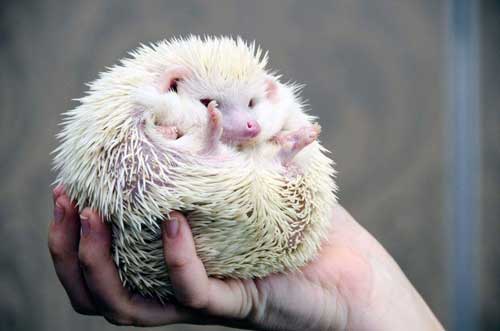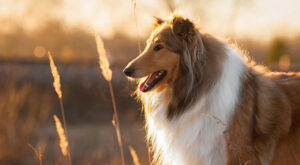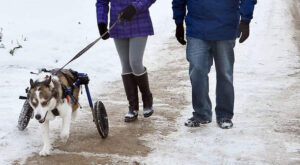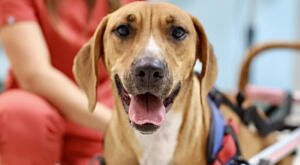Canine rehabilitation is a wonderful way to promote wellness and healing to your pet! Renee Mills, vet tech and certified canine rehabilitation practitioner, discusses this on the “Happy, Healthy Pets” radio podcast. Renee is also the inventor of the No-Knuckling Training Sock, the owner of Elite Canine Fitness, the Rehabilitation Division Manager at Walkin’ Pets, and an avid lecturer on hedgehogs!
Signs that Your Pet Might Need Medical Attention
There are certain pet behaviors to take note of, as they might indicate a need for medical attention:
- Any type of unusual behavior for your pet; you know what s/he is normally like and what behavior is out of the norm!
- Sudden wetting/accidents.
- Hesitancy walking across wooden floors; dogs become afraid of slippery floors as they age and their legs weaken.
- Changes in weight, eating habits, or temperament.
- Unusual growths on any part of the body.
- Weakness after a medical procedure; make sure there isn’t an infection or an internal abnormality.
Always consult with your veterinarian as a first course of action if you suspect that your pet’s behavior indicates an underlying medical issue!
Research the Condition
Educate yourself! Your veterinarian has one perspective; however valid that may be, there may be several perspectives worthy of consideration. Widen your own perspective by doing your own research. The Walkin’ Pets Discussion Forum can be a good place to start.
Look for support groups for your pet’s condition. A support group can give you the encouragement you need, as well as emotional support.
Since animals cannot speak to us, it is up to their owners and medical providers to figure out what the problem is. Owners know their own dogs best and can help medical providers understand what their pet may be trying to communicate.
Special Considerations for Aging Dogs
As dogs age, there are special considerations.
- Keep up the exercise; this is the key to life and good health.
- Watch the weight; adding extra pounds to body weight puts a huge strain and stress on hips and knees.
- Since hearing and vision decline, avoid making big changes to their environment.
- Toys should be softer and brighter since teeth become brittle, and eyesight may be poor.
- Consider doggie diapers for incontinence problems, so a pet can maintain his/her usual lifestyle.
Canine Rehabilitation
Renee explains that canine rehabilitation is as much an art as a science. It is a combination of manual therapy techniques, used along with therapeutic exercise and other modalities.
Canine rehab can return a dog’s range of motion and strengthen injured or weakened areas. Many tools are typically employed in order to find the best outcome for a patient.
Owners are usually given exercises to continue at home with the dog, such as stretching techniques. An important part of excellent canine rehabilitation care is educating pet owners on what and why exercise is important.
A canine rehab unit typically uses a wide array of specific equipment. Peanuts, balance balls, discs, underwater treadmills, laser therapy, and ultrasound have all become state of the art in today’s world of improved technology.
Owners sometimes borrow or purchase equipment to use at home. Wheelchairs may be used as part of a therapeutic program as a rehab protocol, with specific exercises done in the wheelchair.
The No-Knuckling Training Sock, is used by veterinary professionals to help rehabilitate dogs who drag their paws, including those with degenerative myelopathy (DM). It can be used with or without a dog wheelchair to help the dog re-learn how to pick its foot up and use its muscles. And is available to assist with both front and rear paw knuckling.
Did I Hear Hedgehogs?
 Over the years, Renee has worked with a number of pet hedgehogs, as well as rabbits. The hedgehogs have had cervical/neck issues, including dragging their claws.
Over the years, Renee has worked with a number of pet hedgehogs, as well as rabbits. The hedgehogs have had cervical/neck issues, including dragging their claws.
Renee has since become a guest lecturer at the Hedgie-Con Convention, speaking about hedgehog fitness and “how to stretch your hedgehog!”
Related Articles:
Did we answer all your questions on "Canine Rehabilitation"?


 Over the years, Renee has worked with a number of pet hedgehogs, as well as rabbits. The hedgehogs have had cervical/neck issues, including dragging their claws.
Over the years, Renee has worked with a number of pet hedgehogs, as well as rabbits. The hedgehogs have had cervical/neck issues, including dragging their claws.




